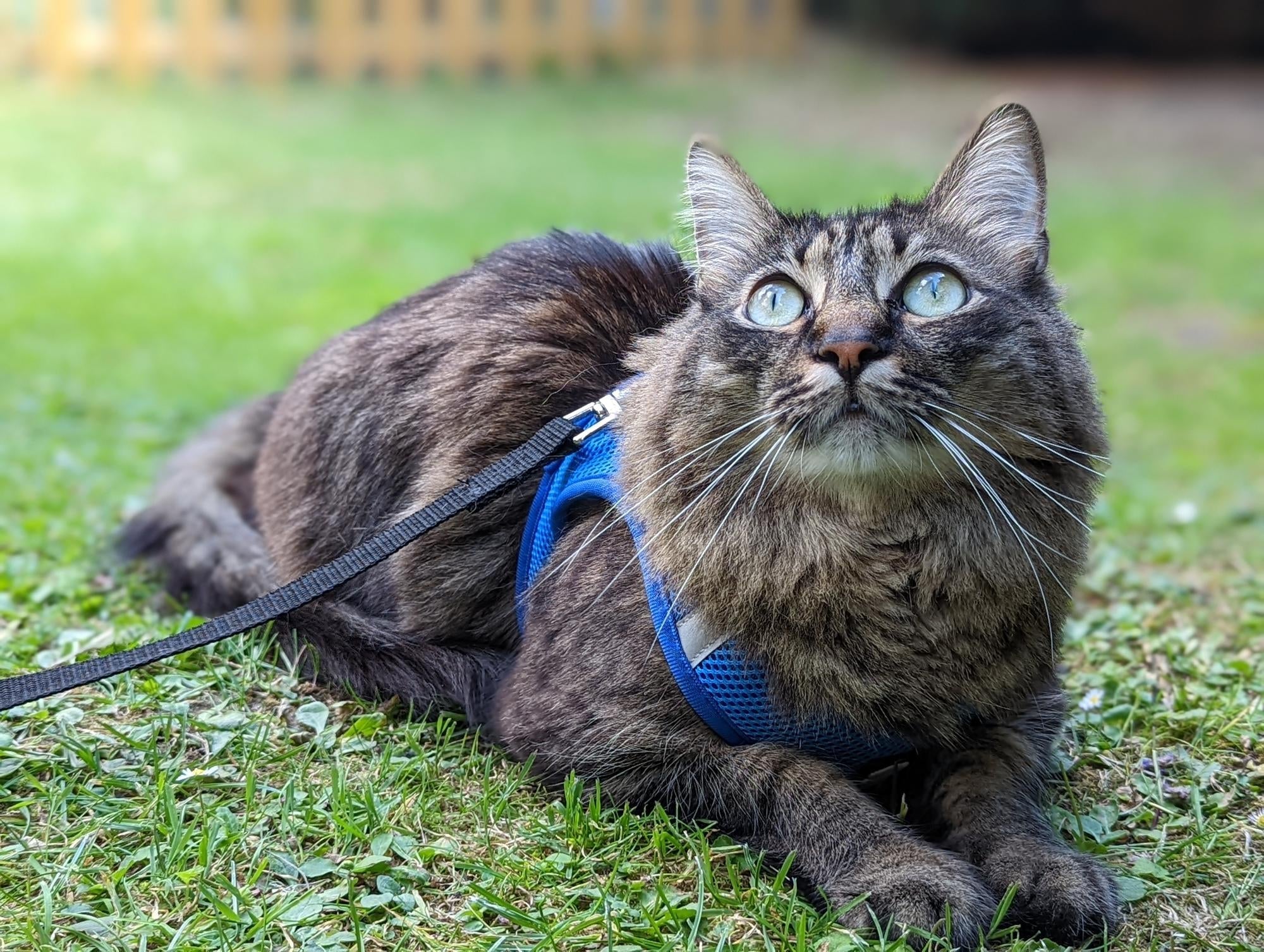Have you ever watched your indoor cat gaze longingly out the window, dreaming of the world beyond? While letting them roam free unsupervised carries risks, leash training offers a fantastic way to safely satisfy their curiosity and provide stimulating enrichment. It might seem daunting, but with patience, positive reinforcement, and the right gear, you can teach your feline friend to confidently explore the outdoors on a leash. This guide, brought to you by Pet Nesta, will walk you through the process step-by-step.
(Step 1: Choosing and Introducing the Harness) The first step is finding a comfortable, secure harness designed specifically for cats. Avoid collar-and-leash setups, as cats can easily slip out of collars. Look for escape-proof designs that distribute pressure evenly. (Subtle sales point: Pet Nesta offers a selection of harnesses designed for feline comfort and safety).
Once you have the harness:
- Familiarization is Key: Don't try to put it on immediately. Leave the harness near your cat's favourite sleeping spot or feeding area for a few days. Let them sniff and investigate it at their own pace.
- Positive Association: Place treats on or around the harness. Gently stroke your cat with the harness while praising them or offering a high-value treat. If the harness has snaps or Velcro, make the sound and immediately follow with a reward. Continue this until your cat shows no fear or hesitation towards the harness.
- First Fitting (Indoors): Gently put the harness on your cat for very short periods. Distract them with treats, play, or mealtime. Many cats initially freeze, flop over, or walk strangely – this is normal! Use a calm, encouraging voice. Gradually increase the time they wear it indoors over several days or weeks. Ensure the fit is snug but allows you to slip two fingers underneath.
(Step 2: Introducing the Leash) Once your cat comfortably wears the harness indoors for extended periods, it's time to introduce the leash. Choose a lightweight leash suitable for cats. (Subtle sales point: Find the perfect lightweight leash to complement your cat's harness at Pet Nesta).
- Repeat Familiarization: Just like with the harness, let your cat get used to the sight and sound of the leash first. Let them sniff it, maybe even bat at it. Attach the leash clip to the harness D-ring and reward.
- Indoor Practice: Attach the leash and let your cat simply drag it around while supervised indoors. This helps them get used to the feeling without any tension.
- Gentle Guidance: After they seem comfortable dragging the leash, pick up the end. Don't pull or drag your cat. Simply follow them around, keeping the leash loose. Encourage movement with treats or toys. Keep these initial indoor leash sessions short and positive.
(Step 3: Considering a Carrier or Backpack (Optional but Recommended)) For safe transport to walking spots or for cats who might feel more secure initially, a cat-specific backpack or carrier is invaluable. (Subtle sales point: Explore Pet Nesta’s range of comfortable and secure cat carriers and backpacks for your adventures). Introduce the carrier just like the harness – leave it out, make it cozy with familiar bedding, place treats inside, and reward exploration. Gradually progress to closing the door briefly, then picking it up and walking around the house. This also helps desensitize them to being contained for vet visits or travel.
(Step 4: Venturing Outdoors – Start Small and Safe) This is the exciting part! But remember, the outside world can be overwhelming.
- Choose Wisely: Your first outdoor sessions should be in a quiet, secure area with minimal distractions – think a screened porch, a secure balcony, or a very quiet backyard corner during a calm time of day. Avoid busy streets, parks, or areas with off-leash dogs initially.
- Keep it Brief & Positive: Let your cat set the pace. They might just want to sit and observe, sniff intensely, or nibble on a (safe) blade of grass. Don't force them to walk far. The goal is a positive experience, even if it's only five minutes long. End the session while they're still enjoying it.
- Safety First: Always carry your cat or place them securely in their carrier when crossing the threshold of your door. This prevents door-dashing and teaches them that outdoor access happens with you and the harness/leash. Training a "sit" cue before clipping the leash can also help manage excitement at the door.
Every cat is an individual. Some adventurous kitties might take to leash training quickly, while more timid cats may need weeks or even months of patient work. Kittens often learn faster, but adult cats absolutely can learn too! Breed can play a minor role, but personality and your consistent, positive approach are the biggest factors. Never punish or force your cat; focus on rewards and making it a fun bonding experience. If your cat seems stressed, shorten the session or go back a step.
Leash training opens up a whole new world for your indoor cat, providing essential mental and physical stimulation safely. By following these steps patiently, using positive reinforcement, and ensuring you have comfortable, secure gear from places like Pet Nesta, you can soon be enjoying outdoor adventures together. Happy exploring!





